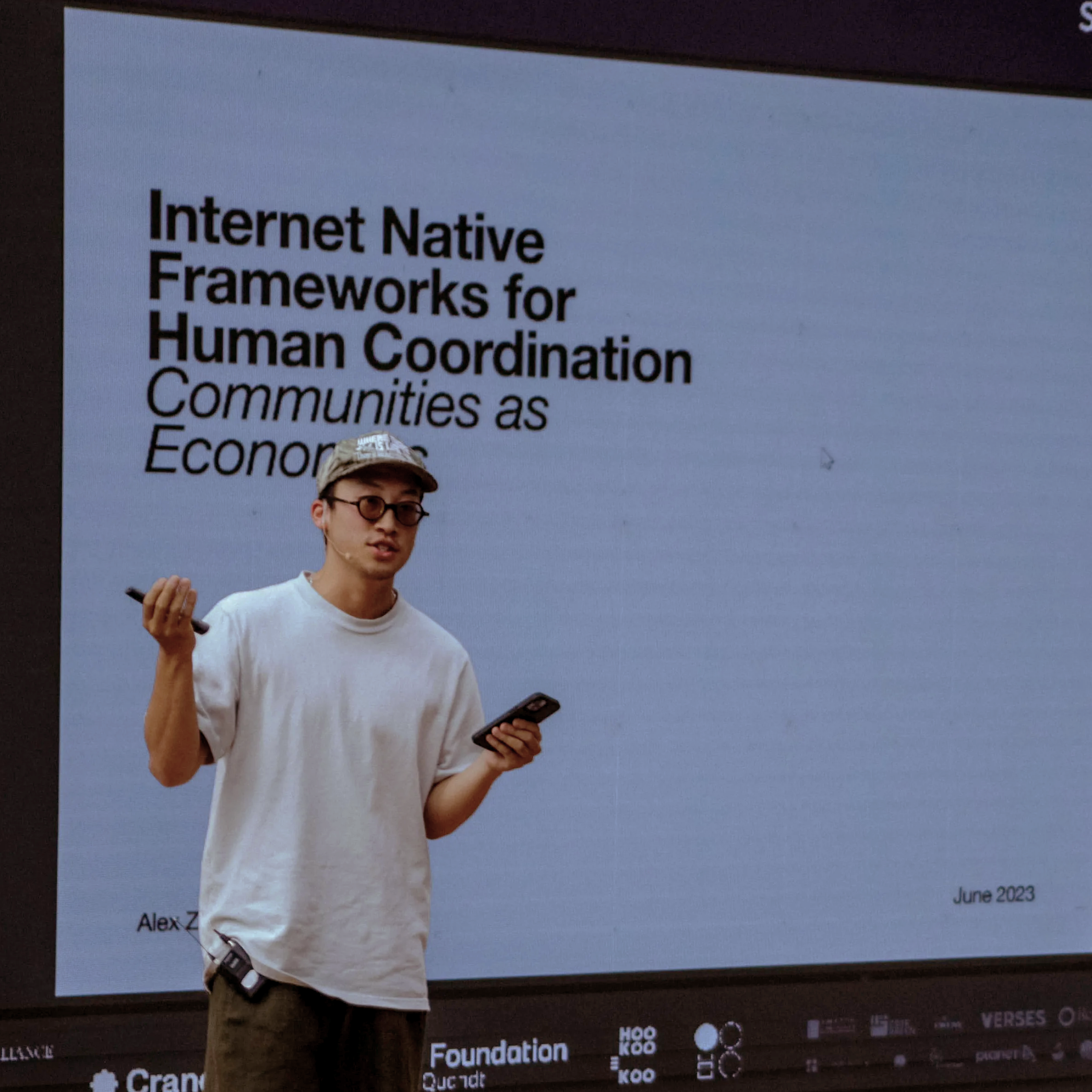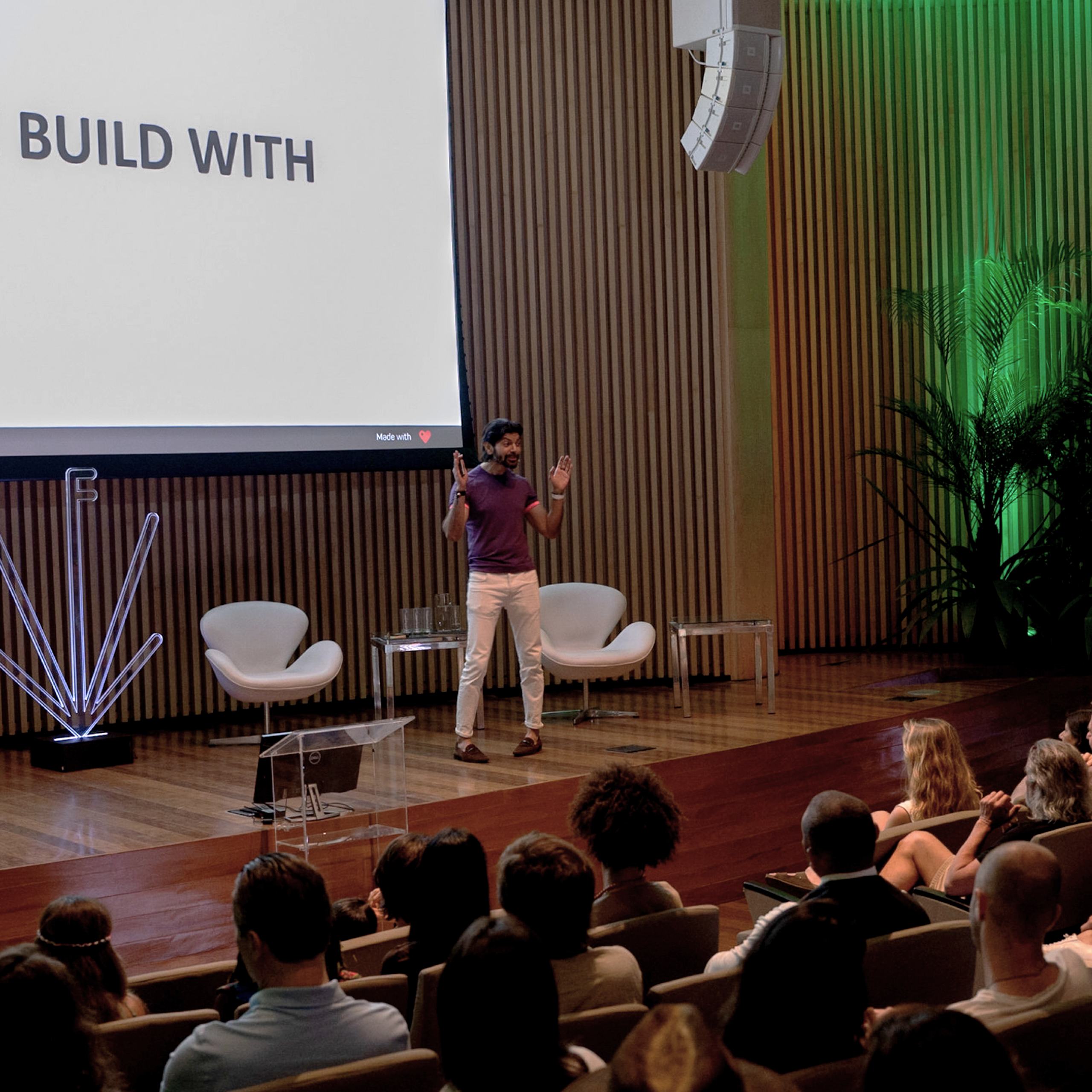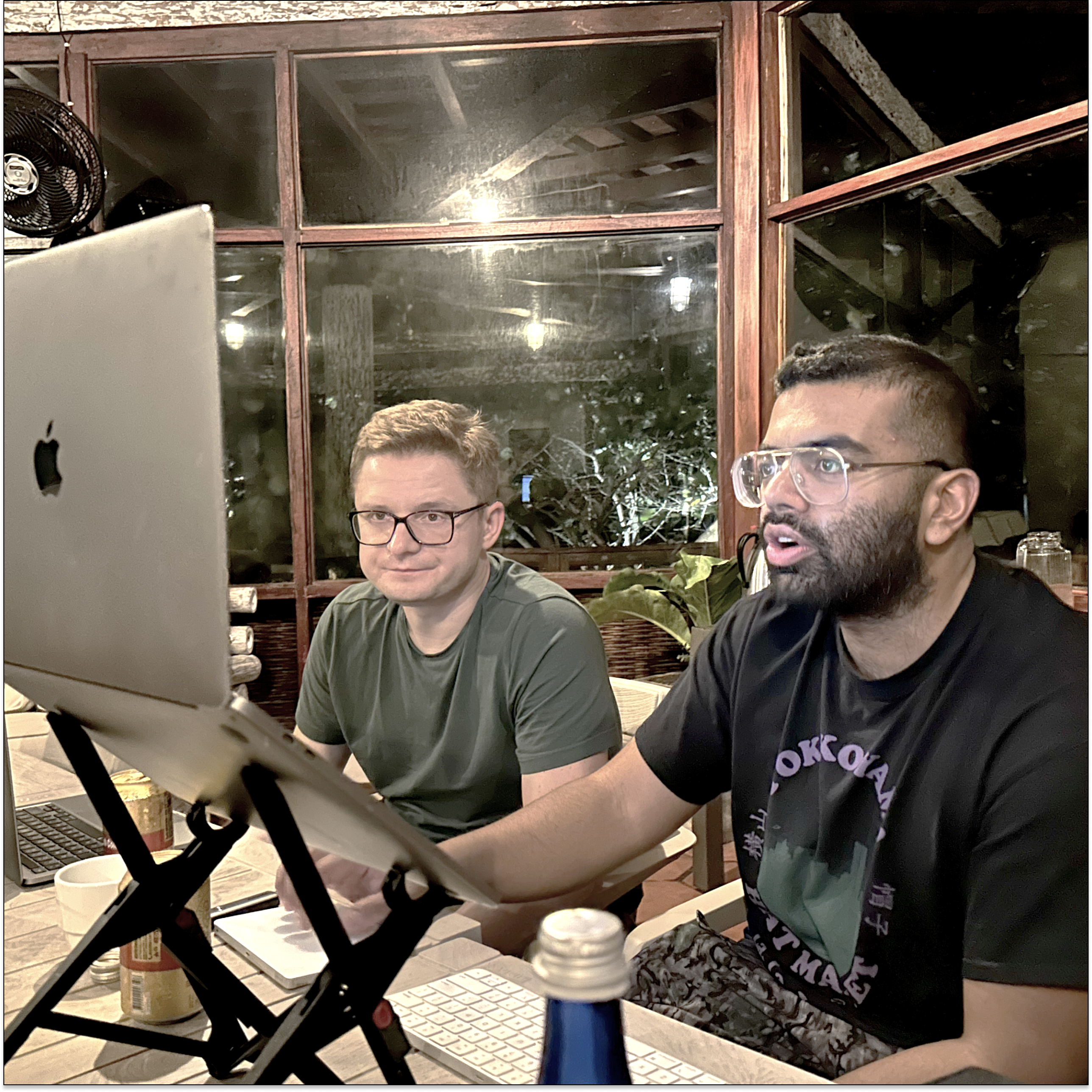Digital Transformation RFP Template & Vendor Scoring Matrix (AI-Focused)

Authors

Matt Letta
CEO of FW
Reading Time
The Digital Transformation RFP Template & Vendor Scoring Matrix: How to Evaluate and Select AI-Powered Vendors

Nearly 70% of complex digital transformations falter due to subpar vendor selection. That's why a robust digital transformation RFP template and a precise vendor scoring matrix are absolutely critical for achieving success.
What Is a Digital Transformation RFP and Why Is It Essential?
A Digital Transformation RFP (Request for Proposal) is a formal procurement document that clearly articulates project objectives, technical specifications, evaluation benchmarks, timelines, and budget parameters. Its purpose is to solicit competitive proposals from potential vendors. By formalizing the project's scope and expectations, an RFP ensures a strong alignment between your organization's strategic goals and a vendor's capabilities. Consider the example of a global manufacturer that reduced integration errors by a remarkable 40% simply by implementing a clear RFP. Understanding these foundational elements is key to designing precise RFP subsections and effective evaluation processes.
What Are the Key Sections of a Digital Transformation RFP?
A well-structured RFP breaks down intricate requirements into manageable sections, providing clear direction for vendors and standardizing their responses.
- Introduction and Executive Summary: Sets forth the project's vision, key success metrics, and the broader organizational context.
- Scope of Work: Clearly defines the expected deliverables, required services, and necessary integration points.
- Technical Requirements: Details the desired system architecture, data sources, API specifications, and performance benchmarks.
- Vendor Qualifications: Outlines the necessary certifications, relevant past experience, and the proposed team's composition.
- Evaluation Criteria: Lists the weighted factors that will be used for assessment, such as technical alignment, cost-effectiveness, and support quality.
- Timeline and Milestones: Presents a clear roadmap of project phases, critical deadlines, and review checkpoints.
- Budget and Pricing Structure: Clarifies the cost models, payment terms, and any necessary contingency reserves.
- Terms and Conditions: Covers essential elements like service-level agreements (SLAs), compliance mandates, and intellectual property ownership.
Each of these sections is designed to foster clarity around expectations and prepare your organization for consistent, objective vendor comparisons.
How Does an RFP Facilitate Vendor Selection in Digital Transformation?
A meticulously crafted RFP significantly streamlines the vendor selection process by standardizing proposal formats, enabling direct, like-for-like comparisons, and accelerating decision-making cycles. By clearly articulating requirements, stakeholders can objectively score proposals against predefined criteria, thereby minimizing evaluation bias. For instance, procurement teams often see a 20-30% reduction in selection time when utilizing a structured RFP complete with scoring guidelines.
Benefits of Structured RFPs
Implementing a structured RFP process can yield substantial improvements in the efficiency of vendor selection. Organizations that employ clear RFPs with defined scoring guidelines frequently experience a notable reduction in the time it takes to make a selection, facilitating quicker decision-making and project initiation.
Gartner, "The Value of Strategic Sourcing in Digital Transformation" (2023)
This citation strongly supports the article's assertion that a well-executed RFP process is instrumental in streamlining vendor selection and accelerating critical decision cycles.
This systematic approach ensures that all critical project aspects are thoroughly addressed before proceeding to the vendor due diligence phase.
What Are Best Practices for Writing an Effective Digital Transformation RFP?
To attract highly qualified, AI-focused vendors, effective RFPs must prioritize clarity, relevance, and robust stakeholder collaboration.
- Engage cross-functional teams from the outset to ensure alignment between business objectives and technical requirements.
- Employ concise language and steer clear of jargon that could potentially confuse bidders.
- Integrate specific AI use cases to rigorously test vendors' expertise in data modeling and machine learning.
- Establish realistic timelines and budgets grounded in current market benchmarks.
- Clearly define scoring rubrics and weighting mechanisms to ensure transparent vendor comparisons.
Adhering to these best practices cultivates competitive and well-considered responses, maintaining essential procurement momentum.
How Do You Craft an AI-Powered Digital Transformation RFP Template?
Developing an AI-powered RFP template involves embedding specific questions and requirements that rigorously assess a vendor's capabilities in data management, model development, and the ethical application of AI. By proactively incorporating AI considerations, you ensure that proposals demonstrate technical depth, robust compliance controls, and a clear path to measurable outcomes. This was evident when a financial services firm achieved a 25% revenue uplift by selecting a vendor through an RFP specifically tailored for AI.
How to Address Data Security and Ethical AI in Your RFP?
By embedding stringent security and ethics clauses directly into your RFP, you establish clear vendor accountability for data protection and the reduction of bias. Mandate adherence to certifications like ISO 27001 or SOC 2, require robust encryption standards, and request documented evidence of fairness audits.
Key considerations to address include:
- Data encryption protocols for both data at rest and in transit.
- Strict access controls and role-based permission management.
- Clearly defined ethical AI policies and rigorous bias testing procedures.
- Full compliance with relevant regulations such as GDPR, CCPA, or industry-specific mandates.
Demanding these critical elements ensures that your AI projects uphold trust and maintain strict regulatory alignment.
How to Define Scope, Timeline, and Budget for AI Digital Transformation Projects?
Precisely defining the scope, timeline, and budget is essential for preventing scope creep and ensuring that expectations are aligned between all stakeholders and vendors.To effectively structure these crucial components:
- Scope: Detail all functional modules, necessary integration points, and specific deliverables.
- Timeline: Segment the project into distinct phases, such as discovery, model development, rigorous testing, and final deployment, complete with clear milestone dates.
- Budget: Provide a transparent breakdown of costs, including labor, software licenses, cloud infrastructure expenses, and essential contingency reserves.
Establishing these parameters upfront empowers vendors to submit realistic proposals and facilitates accurate comparisons during the evaluation phase.
What Is a Vendor Scoring Matrix and How Does It Improve Vendor Evaluation?

A vendor scoring matrix serves as a quantitative tool that systematically maps evaluation criteria against weighted scores, enabling objective comparisons across multiple vendor proposals. By translating subjective judgments into objective numerical ratings, organizations can significantly reduce bias and expedite the selection process. This was demonstrated when a healthcare provider enhanced its decision-making consistency by 40-50% through the implementation of a detailed scoring matrix.
What Are the Core Criteria to Include in a Vendor Scoring Rubric?
A comprehensive scoring rubric should capture all essential performance dimensions, ensuring that every critical factor contributes to the final decision.
- Technical Capability: Assesses the quality of the solution's architecture, AI frameworks utilized, and integration expertise.
- AI Expertise: Evaluates the depth of data science skills, the level of algorithmic innovation, and the results of any proof-of-concept demonstrations.
- Security & Compliance: Verifies adherence to data protection regulations, encryption standards, and relevant compliance mandates.
- Innovation & Roadmap: Examines the vendor’s strategic vision for future enhancements and its alignment with emerging technological trends.
- Cultural Fit: Determines compatibility with organizational values, preferred collaboration styles, and communication protocols.
- Cost & Pricing: Analyzes the total cost of ownership, the structure of licensing models, and the flexibility of payment terms.
- Support & Maintenance: Reviews the terms of service-level agreements (SLAs), available training programs, and the responsiveness of technical support.
Assigning appropriate weights to these criteria, aligned with your strategic priorities, provides a balanced perspective on vendor strengths and potential risks.
How Should Weighting and Scoring Methods Be Applied in the Matrix?
Weighting is used to assign relative importance to each criterion, while scoring measures a vendor's performance against a predetermined scale. A widely adopted approach involves using a 0–5 scale for scoring and percentage weights to reflect strategic impact.Follow these steps to effectively apply weighting and scoring:
- Assign a weight (e.g., 20%) to each criterion, reflecting its importance to your business goals.
- Score each vendor on a 0–5 scale for every criterion evaluated.
- Calculate the weighted score for each entry by multiplying the score by its assigned weight, then sum these totals.
- Rank vendors based on their overall weighted scores to inform your shortlist decisions.
This methodical approach ensures transparency and guarantees that procurement choices are closely aligned with overarching organizational objectives.
What Are the Key Vendor Evaluation Criteria for AI-Powered Digital Transformation?
Selecting the right AI partners necessitates a thorough evaluation of their technical proficiency, innovative capabilities, organizational alignment, and operational support structures. Focusing on these critical criteria ensures a comprehensive assessment of each vendor's suitability for your project.
How to Assess Technical Capability and AI Expertise?
Evaluating technical capability involves a detailed review of proposed architectures, data pipelines, and the AI toolchains that will be employed.
Utilize these effective methods:
- Request detailed architecture diagrams that clearly illustrate data flow and integration points.
- Critically assess proof-of-concept results, benchmark data, and key performance metrics.
- Examine the vendor's certifications and any existing partnerships with major AI platform providers.
- Conduct interviews with the vendor's data scientists and engineers to understand their methodologies and approaches.
A systematic evaluation process will reveal the depth of their expertise and their readiness to meet complex deployment demands.
Why Is Innovation and Cultural Fit Important in Vendor Selection?
Innovation is crucial for ensuring that a vendor's development roadmap stays current with evolving AI trends, while cultural fit is vital for fostering seamless collaboration and effective change management.
Consider the following aspects:
- The vendor’s proven track record in delivering novel and impactful AI solutions.
- Their willingness to engage in co-innovation and facilitate knowledge transfer.
- Their communication style and established decision-making processes.
- A shared alignment with your organization’s values regarding agility and continuous improvement.
Prioritizing these factors cultivates long-term, productive partnerships that drive sustained competitive advantage.
How Does Future.Works’ Consulting Enhance the Use of RFP Templates and Scoring Matrices?
Future.Works’ specialized AI-powered digital transformation consulting significantly elevates standard RFP and scoring matrix frameworks through proprietary methodologies, deep industry benchmarks, and hands-on expert guidance. This collaborative approach accelerates vendor selection, minimizes project risks, and optimizes overall project outcomes.
What Consulting Services Complement the Digital Transformation RFP Process?
Our comprehensive consulting suite is designed to integrate seamlessly with your procurement workflows, delivering:
- Expert strategic RFP design and precise customization.
- Tailored development of AI-centric evaluation criteria and sophisticated scoring rubrics.
- Facilitation of crucial vendor workshops and thorough proposal review sessions.
- In-depth risk assessment and the development of effective mitigation strategies.
- Guidance on post-selection onboarding and the establishment of robust governance frameworks.
These integrated services ensure that your RFPs and scoring matrices yield actionable insights and support well-informed vendor decisions.
How Have Case Studies Demonstrated Success Using These Tools?
In a recent engagement with a prominent logistics provider, Future.Works expertly guided the design of an AI-focused RFP and scoring matrix. This process led to the selection of a vendor that subsequently reduced delivery route errors by an impressive 30% within just six months. In another instance, a financial services firm utilized our framework to select a fraud-detection solution, resulting in a 45% reduction in false positives, clearly demonstrating the profound impact of structured procurement on tangible business performance.
Why Partner with Future.Works for AI-Powered Vendor Selection?
By choosing to partner with Future.Works, your organization gains unparalleled access to deep AI expertise, proven strategic frameworks, and a highly collaborative consultancy model. Our approach masterfully combines technical rigor with industry-leading best practices, ensuring vendor selections that are perfectly aligned with your strategic objectives and deliver measurable, impactful ROI. Explore our complete suite of AI-powered digital transformation consulting services to accelerate your procurement success and achieve your transformation goals.
How Can You Manage Risks and Ensure ROI in Digital Transformation Vendor Selection?
Effectively managing procurement risks and diligently tracking ROI are absolutely essential for justifying AI investments and maintaining crucial executive buy-in. By integrating risk metrics directly into your evaluation processes and clearly defining performance indicators from the outset, you drive accountability and ensure visibility into project outcomes.
What Are Common Risks in Digital Transformation Procurement?
Digital transformation projects frequently encounter the following common risks:
- Scope Creep: The uncontrolled addition of unplanned features, which inevitably inflates project costs.
- Data Quality Issues: The presence of incomplete or inconsistent datasets that can significantly derail AI model performance.
- Integration Failures: Incompatibility with existing legacy systems, leading to costly delays and disruptions.
- Vendor Lock-In: The creation of proprietary dependencies that severely restrict future flexibility and options.
- Compliance Gaps: A failure to meet critical regulatory requirements, potentially resulting in significant penalties.
Identifying these potential risks early in the process is key to developing effective mitigation strategies and refining your vendor selection criteria.
How to Incorporate Risk Assessment into Your Vendor Scoring Matrix?
Embedding specific risk factors directly into your scoring matrix allows for a quantitative assessment of potential drawbacks, balancing them against the project's anticipated benefits.Follow these essential risk assessment steps:
- Assign appropriate weights to risk-related criteria, such as data quality concerns and integration complexity.
- Score each vendor's risk management practices using a clearly defined scale.
- Include contingency planning and established escalation procedures as key evaluation attributes.
- Adjust the overall vendor ranking based on their respective risk exposure scores.
This integrated approach ensures that proposals carrying higher risks receive the thorough scrutiny they warrant before a final selection is made.
Where Can You Find and Download the Digital Transformation RFP Template and Scoring Matrix?
You can easily access a fully customizable Digital Transformation RFP Template and an accompanying AI Vendor Scoring Matrix. These ready-to-use tools are designed to significantly accelerate your procurement process. They expertly combine best-practice sections, AI-specific inquiries, and weighted scoring rubrics, empowering your teams to issue highly effective RFPs and make data-driven vendor choices with confidence.
How to Use the Template and Matrix Effectively in Your Procurement Process?
To maximize the impact and effectiveness of these tools:
- Thoroughly customize all sections to precisely reflect your unique organizational objectives and technical environments.
- Align the AI-specific questions with your organization's current data maturity level and established security posture.
- Adapt the weighting within the scoring matrix to accurately match your strategic priorities.
- Actively involve key stakeholders in scoring calibration workshops to foster consensus and buy-in.
- Treat the template as a dynamic, living document, continuously iterating based on valuable lessons learned throughout the process.
Consistent application of these steps guarantees reliable comparisons and ensures that your final decisions are well-informed and strategically sound.
What Additional Resources and Support Does Future.Works Provide?
Beyond these valuable downloadable assets, Future.Works offers a comprehensive range of support services, including:
- Customized workshops focused on RFP best practices and effective matrix application.
- In-depth advisory services covering critical areas like data governance, ethical AI implementation, and regulatory compliance.
- Ongoing expert coaching throughout the project implementation phase and post-award governance.
Visit our Services page today to explore how our specialized AI-powered digital transformation consulting can expertly guide every critical phase of your vendor evaluation journey.For deeper insights into our expertise and to initiate your transformation journey, connect with Future.Works – your trusted partner in AI-driven innovation.Adopting a detailed RFP template and a robust vendor scoring matrix is the key to streamlining AI-powered digital transformation procurement, ensuring crystal-clear requirements, objective evaluation processes, and demonstrably measurable impact. By meticulously integrating data security, ethical AI principles, and thorough risk assessment into both the RFP document and the scoring rubric, organizations can confidently select vendors that are perfectly aligned with their strategic goals. Download the template, tailor it to your specific needs, and partner with Future.Works’ expert consulting team to optimize your vendor selection, effectively mitigate risks, and maximize your return on investment.













